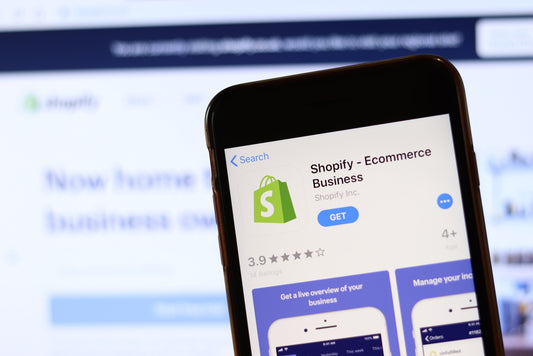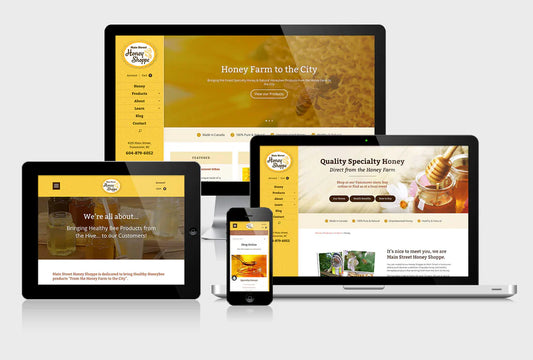The COVID-19 pandemic reshaped the e-commerce landscape, with businesses experiencing an unprecedented surge in online sales.
Our clients, too, rode the wave of increased demand during lockdowns. However, as we move into the post-pandemic era, many business owners find themselves facing a new challenge: a dip in sales.
In this article, we'll unravel the reasons behind the pandemic boom, the hurdles of the post-pandemic slump, and present actionable strategies to not only recover but sustain growth in the ever-evolving e-commerce world.
The Pandemic Boom:
1. Shift in Consumer Behavior:
During the lockdowns, consumers embraced online shopping for its convenience and safety. The surge was fueled by a growing number of first-time online shoppers seeking an alternative to in-person retail experiences.
2. Niche Product Demand:
Products aligned with home improvement, gardening, and self-care witnessed unprecedented demand.
Home Improvement:

The lockdowns prompted many individuals to reevaluate and enhance their living spaces. With more time spent at home, there was a surge in interest and investment in home improvement projects. Consumers sought products ranging from DIY tools and materials to stylish decor items, all aimed at creating a more comfortable and aesthetically pleasing living environment.
Gardening:

The desire for outdoor activities and a connection to nature grew substantially during the pandemic. Gardening became a popular pastime as people sought solace and fulfillment in nurturing green spaces. The demand for gardening tools, seeds, plants, and outdoor decor skyrocketed, driven by a collective inclination towards creating vibrant and tranquil outdoor retreats.
Self-Care:

The stress and uncertainty brought on by the pandemic underscored the importance of self-care. Consumers turned their attention inward, focusing on personal well-being and creating relaxing sanctuaries within their homes. This trend fueled the demand for products like scented candles, high-end bedding, spa and wellness accessories, and other self-care essentials.
Cocooning Lifestyle:

The concept of "cocooning" gained prominence, reflecting a lifestyle shift where individuals sought comfort and security within their personal spaces. This shift influenced purchasing decisions towards items that contribute to a cozy and inviting home environment, aligning with the broader trend of nesting and finding sanctuary within one's living space.
Elevated At-Home Experiences:
With restrictions on travel and entertainment, consumers redirected their discretionary spending towards enhancing their at-home experiences. This manifested in the increased demand for products that elevated everyday activities, transforming mundane routines into enjoyable rituals.
DIY Culture:

The do-it-yourself (DIY) culture experienced a renaissance during the pandemic. With more time at home and a desire for personal accomplishment, consumers eagerly took on various DIY projects. This DIY mindset spurred the demand for tools, kits, and supplies across home improvement and gardening categories.
Holistic Wellness:
Beyond physical self-care, there was a heightened focus on holistic wellness encompassing mental and emotional well-being. Consumers sought products that contributed to a holistic sense of balance, from calming scents to luxurious bedding that promoted better sleep and relaxation.
3. Digital Migration of Businesses:
Traditional businesses swiftly migrated online to survive, expanding the e-commerce market. This shift not only provided a lifeline for businesses during challenging times but also broadened the customer base for online sellers.
The Post-Pandemic Challenge:
1. Evolving Consumer Behavior:
As restrictions ease, some consumers revert to pre-pandemic shopping habits. The initial excitement and necessity of online shopping have waned for certain product categories.
2. Intensified Competition:
The influx of businesses into the online space during the pandemic has led to heightened competition. New entrants and established brands are now vying for consumer attention in a saturated market.
3. Supply Chain Disruptions:
Ongoing global challenges continue to affect supply chains, leading to inventory shortages and delayed deliveries. This, in turn, results in a less-than-optimal customer experience and diminished loyalty.
Strategies for Sustainable Growth:
1. Enhanced Customer Engagement:
Leverage data analytics to gain insights into changing consumer preferences. Implement personalized marketing campaigns that reconnect with your audience on a more personal level.
2. Diversification of Product Offerings:
Identify complementary products or expand your existing product lines. By catering to evolving consumer interests, you can maintain a diverse inventory that appeals to a broader audience.
3. Optimized Digital Marketing:
Refresh your digital marketing strategies with innovative and targeted approaches. Utilize social media, influencers, and interactive content to captivate your audience and rekindle interest.
4. Customer Loyalty Programs:
Implement loyalty programs to retain existing customers. Offering exclusive discounts, early access to sales, or reward points for continued engagement can incentivize loyalty.
5. Adaptability and Agility:
Stay agile in response to market changes. Quick adaptation to new trends and consumer behaviors will keep you ahead of the competition and better positioned to capitalize on emerging opportunities.
6. Supply Chain Optimization:
Work closely with suppliers to ensure a stable and efficient supply chain. Transparent communication with customers about potential delays will foster understanding and maintain trust.
7. Educational Content and Community Building:
Provide informative content related to your products. Building a community around your brand through engaging content and forums not only educates your customers but also creates a loyal following.
8. User Experience Enhancement:
Optimize your Shopify websites for an exceptional user experience. Streamline the purchasing process, invest in responsive design, and ensure that your online storefront is inviting and easy to navigate.
Conclusion:
While the surge in online sales during the pandemic was extraordinary, the post-pandemic landscape demands adaptability, creativity, and strategic thinking.
By understanding the factors behind the initial boom, acknowledging the challenges of the current market, and implementing these recovery strategies, businesses can not only recover lost ground but also foster sustainable growth in the evolving e-commerce space.
As we navigate this transition together, let innovation and resilience be the driving forces propelling your Shopify store and digital marketing efforts toward a prosperous future.
From the boom of the pandemic to the bloom of recovery, the journey continues, and success awaits those who embrace change and rise to the occasion.
Navigate the E-commerce Landscape Post-Pandemic
Explore strategies for sustainable growth! Connect with us to discuss actionable approaches that ensure your business not only recovers but thrives in the evolving e-commerce world.
Why Shop Innovator?
- Collaborate with a Team of eCommerce Experts with over two decades of experience.
- Cost-effective eCommerce support tailored to your budget.
- Accelerated e-commerce success with Website Updates, Reviews & Reputation Management, Email Marketing, Search Marketing, Social Media, and Content Creation.
- Scale Your Support as Your Business Grows—No Hassle of Hiring or Managing Additional Staff.
- Validated Results with Countless E-Commerce Brands in the Home and Garden Sector.
Join Us for a Free 30-minute Discovery Call—Let's Work Together to Improve Your Business!
Want to boost your eCommerce sales?
- Get a free store audit from Shop Innovator!
- We'll analyze your website, SEO, and marketing strategy.
- Find opportunities for growth and higher conversions.
- No cost, no obligation - just actionable insights to help you succeed.





